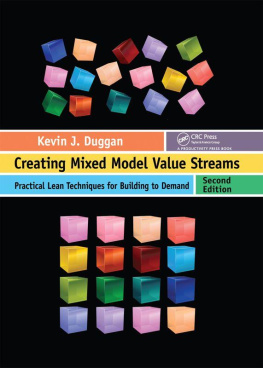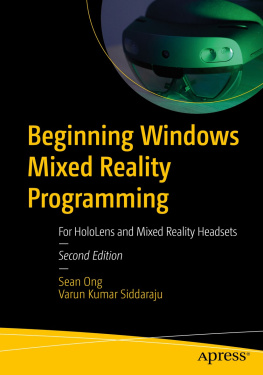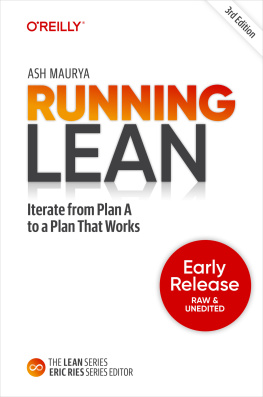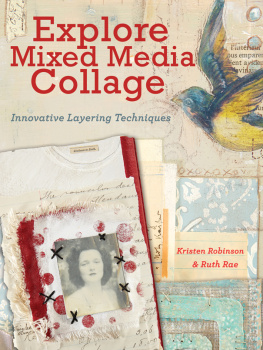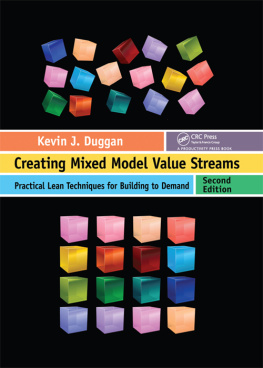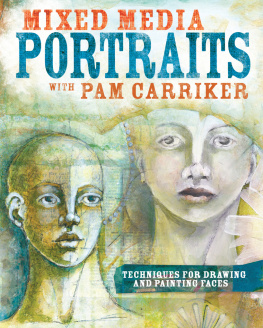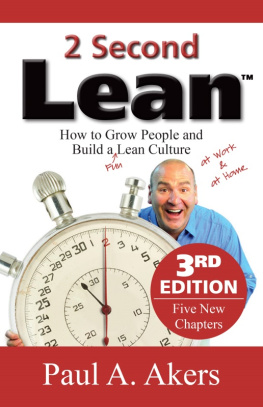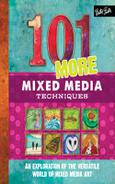Kevin J. Duggan - Creating Mixed Model Value Streams: Practical Lean Techniques for Building to Demand, Second Edition
Here you can read online Kevin J. Duggan - Creating Mixed Model Value Streams: Practical Lean Techniques for Building to Demand, Second Edition full text of the book (entire story) in english for free. Download pdf and epub, get meaning, cover and reviews about this ebook. year: 2012, publisher: Productivity Press, genre: Home and family. Description of the work, (preface) as well as reviews are available. Best literature library LitArk.com created for fans of good reading and offers a wide selection of genres:
Romance novel
Science fiction
Adventure
Detective
Science
History
Home and family
Prose
Art
Politics
Computer
Non-fiction
Religion
Business
Children
Humor
Choose a favorite category and find really read worthwhile books. Enjoy immersion in the world of imagination, feel the emotions of the characters or learn something new for yourself, make an fascinating discovery.
- Book:Creating Mixed Model Value Streams: Practical Lean Techniques for Building to Demand, Second Edition
- Author:
- Publisher:Productivity Press
- Genre:
- Year:2012
- Rating:3 / 5
- Favourites:Add to favourites
- Your mark:
Creating Mixed Model Value Streams: Practical Lean Techniques for Building to Demand, Second Edition: summary, description and annotation
We offer to read an annotation, description, summary or preface (depends on what the author of the book "Creating Mixed Model Value Streams: Practical Lean Techniques for Building to Demand, Second Edition" wrote himself). If you haven't found the necessary information about the book — write in the comments, we will try to find it.
Following in the footsteps of its bestselling predecessor, Kevin J. Duggan, an executive mentor and recognized authority on Lean and Operational Excellence, draws on more than 10 years of experience and learning to provide Creating Mixed Model Value Streams, Second Edition. This second edition takes a step-by-step approach to implementing Lean in complex environments and describes which Lean techniques to use when faced with difficult situationsincluding high product mix, scheduling problems, shared resources, and unstable customer demand. In addition to a new section on handling shared resources to support mixed model production, the second edition:
- Contains updates to sections on mixed model value streams
- Introduces new information on constructing product family matrices
- Expands on the concept of takt in mixed models
- Provides additional insights on existing mixed model concepts, such as determining product family, takt capability, and heijunka (load level scheduling)
- Presents new concepts on sequencing work, such as offset scheduling and sequenced first-in, first-out (FIFO) lanes
Illustrated with a case study based on actual experience as well as a CD with helpful tools, the book walks readers through the reasoning the author has used with great success in practice. It delves beyond the basics of value stream mapping to explain how to create future states in a manufacturing environment characterized by multiple products, varying cycle times, and changing demand. Demonstrating advanced techniques for creating flow through shared resources, it also considers the concept of a guaranteed turnaround time for the shared resource.
The Accompanying CD Includes:
- Spreadsheet and tutorial for sorting products into families
- Spreadsheets for calculating equipment required and for determining the interval for Every Part Every Interval (EPEI)
- Samples of visual method sheets for standard work
- Case study value stream maps and mapping icons
Kevin J. Duggan: author's other books
Who wrote Creating Mixed Model Value Streams: Practical Lean Techniques for Building to Demand, Second Edition? Find out the surname, the name of the author of the book and a list of all author's works by series.

